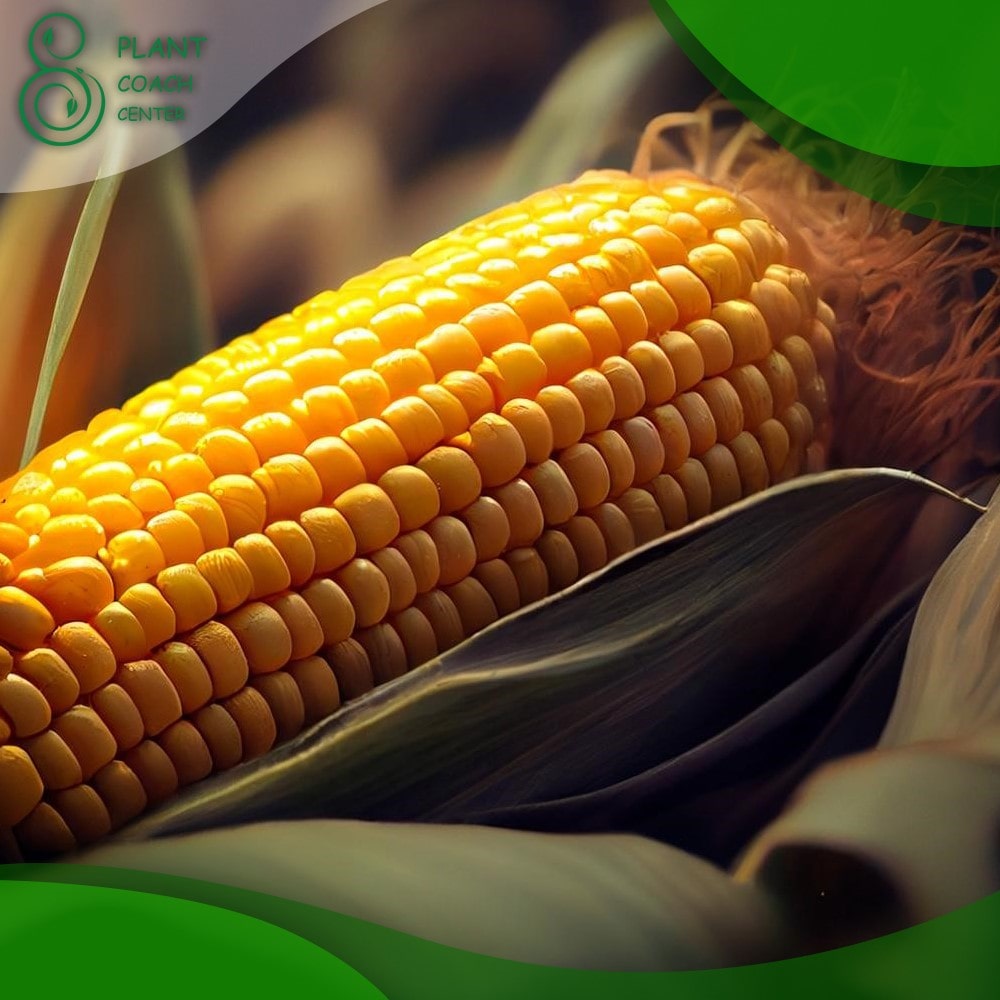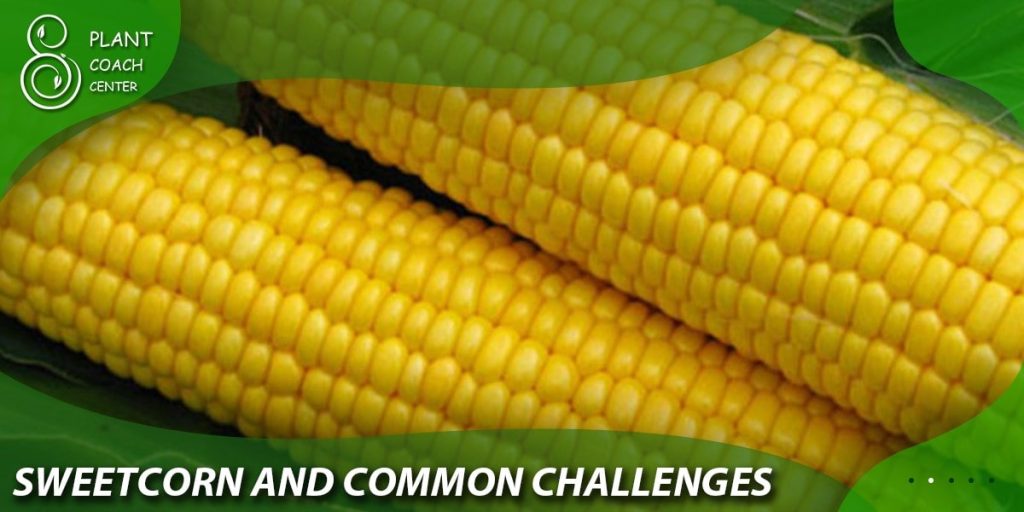When to Plant Sweetcorn
Growing sweetcorn (Zea mays) can be a rewarding endeavor for any gardener. Known for its sweet and succulent kernels, sweetcorn is a staple in many cuisines around the world. To ensure a successful sweetcorn harvest, it’s crucial to understand the timing and techniques of planting this warm-season crop.
In this comprehensive guide, we will delve into the various aspects of when to plant sweetcorn, from climate considerations to soil preparation, and from selecting the right varieties to managing common plant problems. By following these guidelines, you’ll be on your way to enjoying delicious, homegrown sweetcorn straight from your garden.
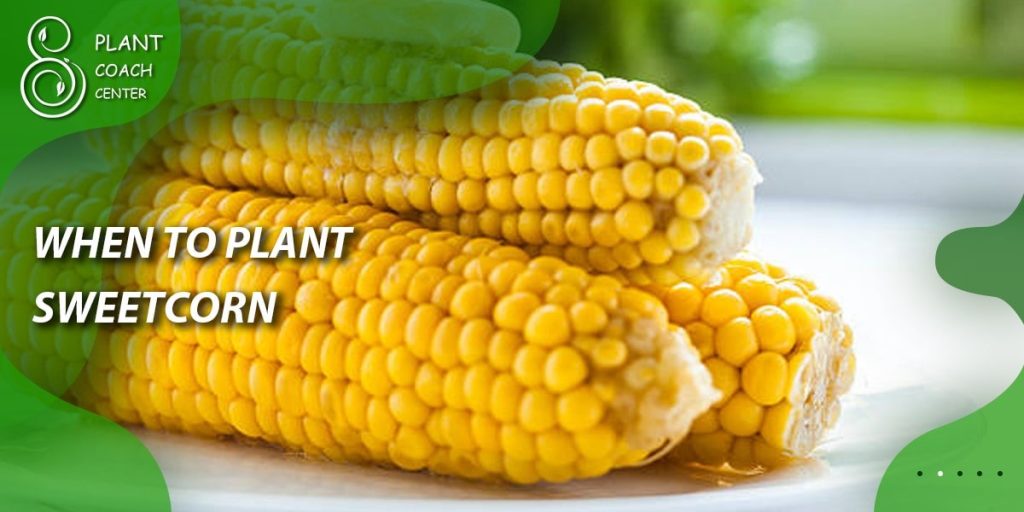
Understanding Sweetcorn Growth and Development
Before diving into the specifics of planting sweetcorn, it’s important to understand the growth and development process of this crop. Sweetcorn has a unique life cycle that consists of several stages, from seed germination to tassel and silk emergence, followed by pollination and kernel development. By gaining insights into these stages, you’ll be better equipped to make informed decisions regarding planting times and care throughout the growing season.
Sweetcorn Life Cycle
. Germination: The sweetcorn life cycle begins with the germination of the seeds. Proper soil moisture, temperature, and seed quality are crucial factors in ensuring successful germination.
. Seedling Stage: After germination, the sweetcorn seeds develop into seedlings. At this stage, they require adequate sunlight, moisture, and nutrient availability to establish a strong root system.
. Vegetative Growth: Once the seedlings establish, sweetcorn enters the vegetative growth phase. During this stage, the plant focuses on leaf production and developing a robust stalk and foliage.
. Tassel and Silk Emergence: As the plants mature, the tassels (male flowers) and silks (female flowers) emerge. These are essential for pollination and subsequent kernel development.
. Pollination and Fertilization: Sweetcorn is wind-pollinated, meaning the pollen from the tassels must reach the silks for successful fertilization. Proper timing of planting is crucial to ensure synchronized tassel and silk emergence.
. Kernel Development: Following successful pollination, the kernels begin to develop. Adequate moisture, sunlight, and nutrient availability are vital during this stage to support kernel growth and sweetness.
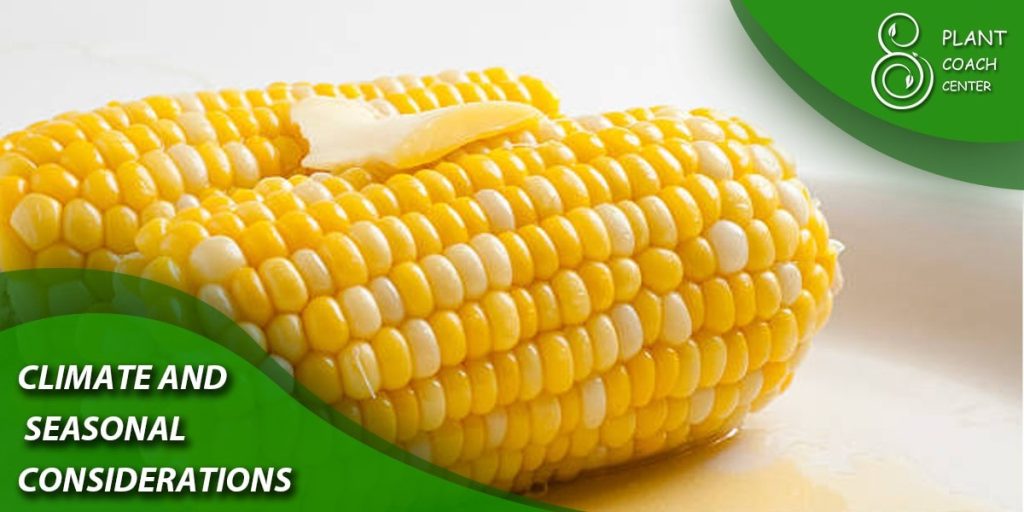
Climate and Seasonal Considerations
The climate and seasonal conditions in your region play a significant role in determining the ideal timing for planting sweetcorn. Sweetcorn is a warm-season crop that requires a specific range of temperatures for optimal growth and development. Consider the following factors when determining the suitable planting time for your sweetcorn crop:
Optimal Climate for Sweetcorn
Sweetcorn thrives in regions with warm summers and a frost-free growing season. The ideal temperature range for sweetcorn growth is between 60°F (15°C) and 95°F (35°C). Temperatures below 50°F (10°C) can stunt growth, while frost can be detrimental to the plants. It’s crucial to choose a planting time that aligns with your local climate conditions.
Frost-Free Dates and Growing Seasons
Knowing the average dates of the last spring frost and the first fall frost in your area is essential for determining the length of your sweetcorn growing season. Consult your local agricultural extension office or meteorological resources to find these dates. In general, sweetcorn should be planted after the last frost date when the soil has warmed up sufficiently.
Determining Your Planting Zone
The United States Department of Agriculture (USDA) has established plant hardiness zones, which indicate the average minimum temperatures in different regions. Knowing your USDA planting zone can assist in determining the appropriate planting time for sweetcorn. Consult the USDA Plant Hardiness Zone Map or similar resources specific to your country or region for this information.
Soil Preparation for Sweetcorn
Proper soil preparation is crucial for the success of your sweetcorn crop. Sweetcorn prefers well-draining soil that is rich in organic matter. Follow these steps to prepare your soil:
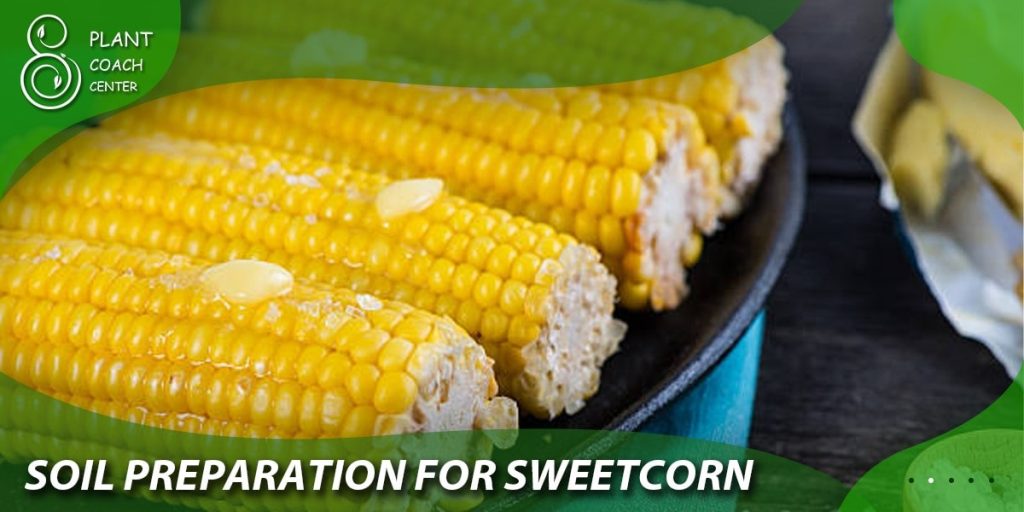
Soil Requirements for Sweetcorn
– pH Level: Sweetcorn thrives in slightly acidic to neutral soil, with a pH range of 6.0 to 7.0. Test your soil’s pH and make necessary adjustments using organic amendments or lime.
– Soil Texture: Sweetcorn prefers loamy soil with good drainage. Sandy soils drain too quickly, while clay soils retain water and may cause root rot. Amending heavy soils with organic matter improves drainage and fertility.
– Organic Matter: Incorporate well-rotted compost or aged manure into the soil to enhance its fertility, moisture-holding capacity, and overall structure.
Testing and Amending Soil
Conduct a soil test before planting to assess its nutrient composition and identify any deficiencies or imbalances. Soil testing kits are available at garden centers or through your local agricultural extension office. Based on the test results, amend the soil with appropriate organic or synthetic fertilizers to ensure optimal nutrient levels for sweetcorn growth.
Proper Soil Drainage for Sweetcorn
Sweetcorn roots are susceptible to waterlogging and root rot. Ensure proper soil drainage by incorporating organic matter into heavy soils and avoiding over-irrigation. Raised beds or mounded rows can also improve drainage. If your soil has poor drainage, consider installing a subsurface drainage system to prevent water accumulation.
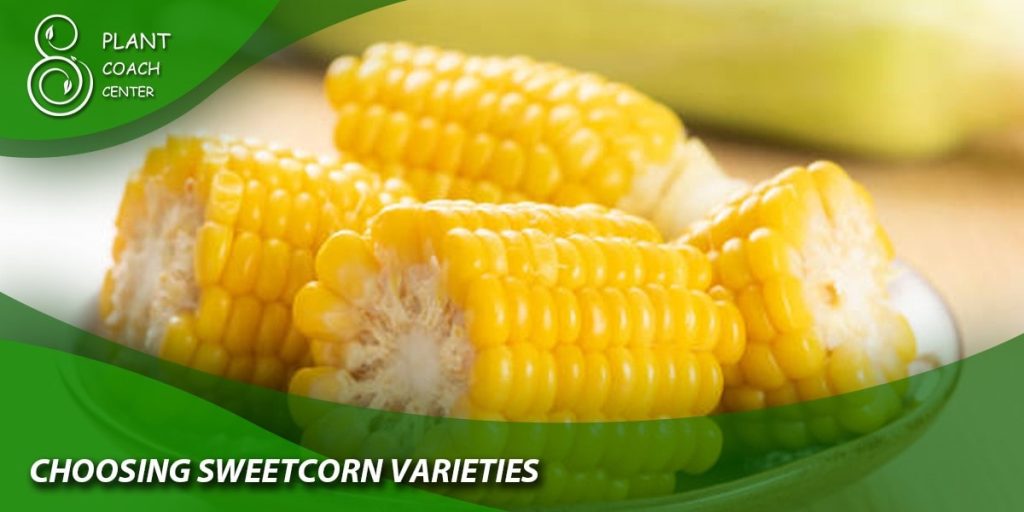
Choosing Sweetcorn Varieties
The selection of appropriate sweetcorn varieties is crucial for successful cultivation. Sweetcorn varieties vary in terms of sweetness, texture, ear size, maturity time, and disease resistance. Consider the following factors when choosing sweetcorn varieties:
Understanding Sweetcorn Types
Sweetcorn is classified into three main types: standard (su), sugar-enhanced (se), and supersweet (sh2). Each type has different levels of sugar content and texture:
– Standard Sweetcorn: This type has the traditional sweetcorn flavor and texture. It has a shorter shelf life and should be consumed shortly after harvest.
– Sugar-enhanced Sweetcorn: Sugar-enhanced varieties have higher sugar content, a creamy texture, and improved sweetness compared to standard sweetcorn. They have a longer shelf life and retain their sweetness for a longer period.
– Supersweet Sweetcorn: Supersweet varieties have the highest sugar content, providing an exceptionally sweet and crisp eating experience. They have a longer shelf life and hold their sweetness for an extended period.
Factors to Consider When Selecting Varieties
When choosing sweetcorn varieties, consider the following factors:
– Maturity Time: Sweetcorn varieties have different maturity times, ranging from early to midseason and late. Select varieties that suit your climate, growing season, and desired harvest time.
– Yield: Evaluate the yield potential of the varieties you are considering. Some varieties produce larger and more abundant ears, while others are known for their high yield in challenging conditions.
– Disease Resistance: Check for disease resistance information provided by seed companies. Resistance to common sweetcorn diseases such as common rust, northern corn leaf blight, and Stewart’s wilt can greatly contribute to successful cultivation.
Recommended Sweetcorn Varieties for DifferentGrowing Conditions
Here are some recommended sweetcorn varieties for different growing conditions:
- Early-Maturing Varieties:
– ‘Bodacious’: An early-maturing se hybrid known for its delicious flavor and disease resistance.
– ‘Kandy Korn’: A popular se variety with excellent sweetness and tender kernels.
– ‘Early Sunglow’: An su variety that matures quickly and produces flavorful, yellow kernels.
- Main-Season Varieties:
– ‘Silver Queen’: A well-known standard variety with superb flavor and large, white kernels.
– ‘Ambrosia’: A se variety with excellent sweetness and a good balance of tenderness and flavor.
– ‘Peaches & Cream’: A se bicolor variety that combines the sweetness of yellow and the tenderness of white kernels.
- Supersweet Varieties:
– ‘Mirai 301’: A supersweet variety with exceptional sweetness and a crunchy texture.
– ‘Obsession’: A sh2 variety known for its tender, sweet kernels and excellent disease resistance.
– ‘Sweetness’: A popular sh2 variety that offers high sugar content and good disease resistance.
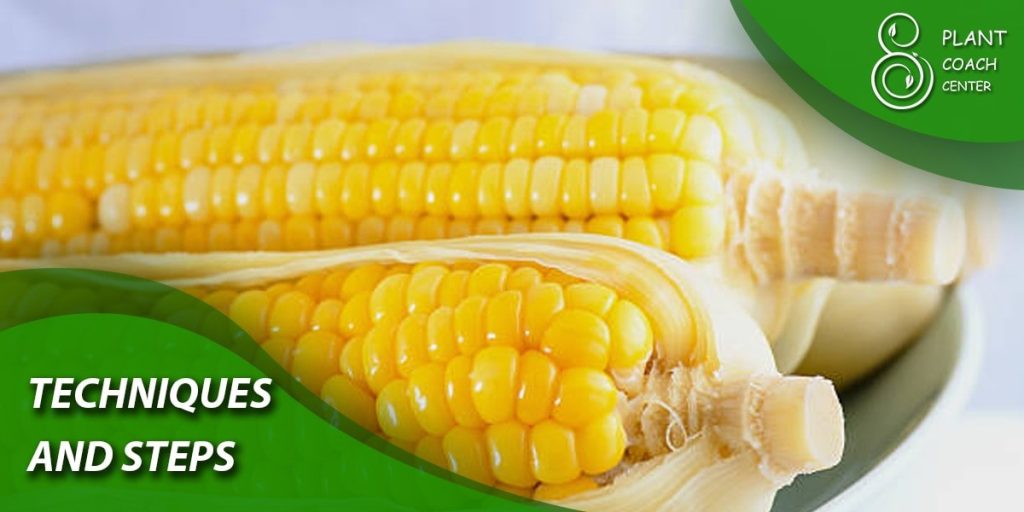
Planting Sweetcorn: Techniques and Steps
Proper planting techniques are essential for ensuring the successful establishment of your sweetcorn crop. Follow these steps to plant sweetcorn effectively:
- Site Selection
Choose a sunny location for your sweetcorn crop, as it requires a minimum of six hours of direct sunlight per day. Select an area with well-drained soil and protection from strong winds, if possible.
- Timing
Plant sweetcorn after the danger of frost has passed and the soil has warmed up to a temperature of around 55°F (13°C) or higher. This typically occurs a few weeks after the last spring frost date.
- Spacing
Sweetcorn is wind-pollinated, so proper spacing is crucial to ensure successful pollination. Plant the seeds in blocks or multiple rows rather than a single row to enhance pollination. Allow 12-18 inches (30-45 cm) between plants and leave 30-36 inches (76-91 cm) between rows.
- Seed Treatment and Planting Depth
Some gardeners prefer to soak sweetcorn seeds in water for 6-12 hours before planting to promote germination. Plant the seeds 1-2 inches (2.5-5 cm) deep in well-prepared soil.
- Watering
After planting, provide adequate water to ensure good seed germination. Maintain consistent moisture throughout the growing season, especially during hot and dry periods.
- Fertilization
Apply a balanced fertilizer or compost at planting time to provide essential nutrients for initial growth. Follow up with side-dressing applications of nitrogen-rich fertilizer during the growing season.
- Mulching
Apply a layer of organic mulch around the base of the sweetcorn plants to conserve moisture, suppress weed growth, and regulate soil temperature.
- Weed Management
Regularly remove weeds around the sweetcorn plants to reduce competition for nutrients, water, and sunlight. Be cautious when weeding to avoid damaging the shallow roots.
Sweetcorn Care and Common Challenges
Proper care practices are essential for ensuring the health and productivity of your sweetcorn plants. Additionally, being aware of common challenges can help you address issues promptly. Consider the following care guidelines and challenges:
Watering
Sweetcorn requires consistent moisture throughout the growing season, especially during silking and kernel development. Provide deep, regular watering to maintain soil moisture levels. Avoid overwatering, as it can lead to root rot and other diseases.
Fertilization
Apply nitrogen-rich fertilizer as side-dressings during the growing season to meet the nutrient demands of sweetcorn. Avoid excessive nitrogen applications, as it can promote lush foliage growth at the expense of ear development.
Mulching
Maintain a layer of mulch around the base of sweetcorn plants to conserve moisture and suppress weed growth. Make sure the mulch does not come into direct contact with the stems to prevent rot.
Pollination Assistance
To enhance pollination, you can hand-pollinate sweetcorn plants by gently shaking or tapping the tassels to release pollen onto the silks. This is particularly useful in areas with insufficient wind for effective pollination.
Pests
Common pests that can affect sweetcorn include corn ear worms, aphids, and raccoons. Monitor your plants regularly for signs of pest infestation, such as chewed leaves, stunted growth, or damaged ears. Implement appropriate pest control measures, such as the use of insecticidal soaps, natural predators, or physical barriers, to manage pest populations effectively.
Diseases
Sweetcorn can be susceptible to various diseases, including common rust, northern corn leaf blight, and Stewart’s wilt. Select disease-resistant varieties and practice good crop rotation to minimize disease pressure. If necessary, apply fungicides following the instructions provided to control or prevent the spread of fungal diseases.
Harvesting
Sweetcorn is ready for harvest when the kernels are plump, juicy, and release a milky fluid when punctured. The silks should be dry and brown. Harvesting time varies depending on the variety and the desired sweetness. Check individual variety recommendations for specific harvest guidelines. To harvest, grasp the ear firmly and pull downward, twisting it off the plant.
Storage and Consumption
For the best flavor and sweetness, consume sweetcorn as soon as possible after harvest. If you need to store it, refrigerate the ears immediately and use them within a few days. For longer-term storage, blanch and freeze the kernels or consider canning them using appropriate methods.
Crop Rotation
To minimize the risk of soilborne diseases and nutrient depletion, practice crop rotation by avoiding planting sweetcorn in the same location year after year. Rotate sweetcorn with other crops from different plant families.
Record-Keeping
Maintain a gardening journal to keep track of planting dates, variety performance, pest and disease occurrences, fertilization schedules, and other essential information. This will help you make informed decisions and improve your sweetcorn cultivation practices in subsequent seasons.
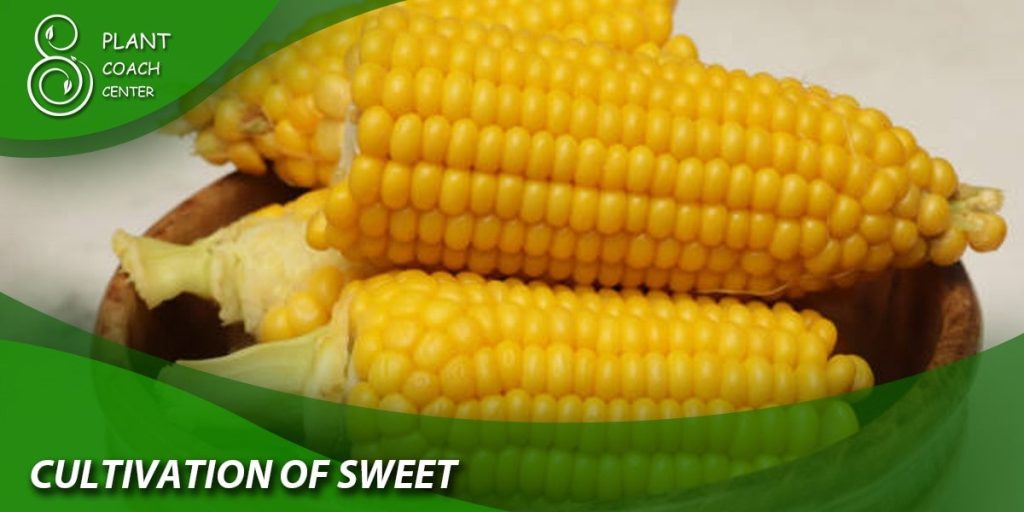
Conclusion
Growing sweetcorn can be a rewarding experience, providing you with delicious and fresh ears of corn. By considering your climate, soil preparation, variety selection, and following proper planting techniques, you can establish a healthy sweetcorn crop.
Remember to provide adequate water, fertilization, and care throughout the growing season while managing pests and diseases. Harvest your sweetcorn at the right time and store or consume it promptly for the best flavor. Enjoy the process of growing your own sweetcorn and savor the taste of the harvest!


